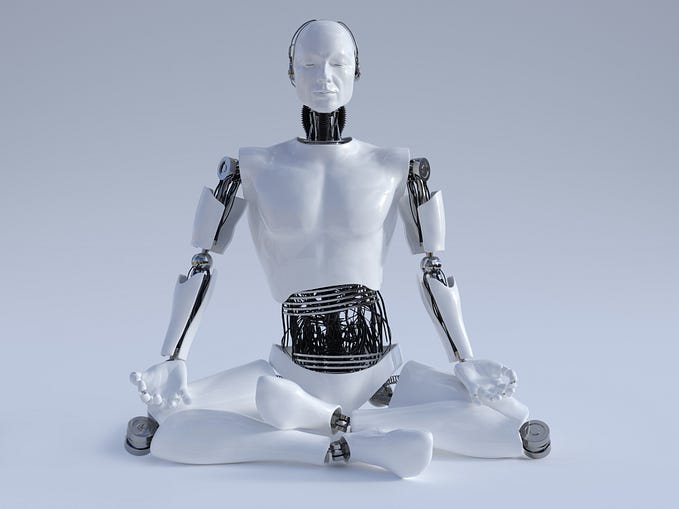Under the Skin
The history and future of the iconic Ferrari brand at the Design Museum.
Written by Craig Berry
Designer & Writer

The name Ferrari is synonymous with the car industry, particularly that of the super car industry and F1 sport; the exhibition at the Design Museum in London explores the history, heritage, design and future of the Ferrari company and brand. This is my perspective of the exhibition which I visited on January 2nd 2018 – my first of surely many exhibitions in 2018. I’m not really a ‘car-person’ but I am a ‘design-person’ so it was a really interesting exhibition to see from these perspectives.
The exhibition is titled ‘Ferrari: Under the Skin’ which for two reasons is a perfect name. Firstly the exhibition offers an insight into the Ferrari brand, a metaphorical look under the skin of the brand; there is previously unseen objects and ephemera particularly from the company’s founder Enzo Ferrari. Secondly there are literally Ferrari’s that you can see under the skin of i.e. the outer-panels on some models are removed and the imperfect and shiny interior parts are on show as beautiful pieces of automotive and industrial design.
Through this name, the exhibition covers several key topics such as exploring Enzo Ferrari’s life as the company founder but also as a driver and enigmatic character in the automotive industry. Obviously, the Ferrari cars themselves of which some are more known and iconic than others ranging from 1940 to present day; also the clients whom bought, drove and enhanced the Ferrari image. Racing is an important topic that is covered; Formula 1 and Ferrari go hand-in-hand, as the oldest surviving and most successful F1 team it’s easy to see why. The design and manufacturing of Ferrari cars is also covered here showing how the cars are painstakingly designed and precisely manufactured but also how this technology is going to be used and implemented into the future of the Ferrari brand.


Because this exhibition is on show to celebrate the 70th anniversary of Ferrari, it seems right to say that the start of Ferrari was in 1947; however Enzo Ferrari founded the Scuderia Ferrari race team in 1929 with no intention of producing road cars and even started racing cars himself as early as 1919, but it is 1947 where the story begins here.
Following the Second World War and subsequent devastation of the Italian economy, Enzo and his team decided they would break into the automotive industry and would release their first road car: the Ferrari 125 S. This car—or replica of the original car—is the first car you are hit with upon entering the exhibition space; its an immediate and unapologetic introduction which is as Ferrari as it gets: a red race/sports car. It introduces you to the exhibition but also its designer and company founder, through later rooms there are multiple pieces of ephemera from Enzo’s personal collection of ‘stuff’. Notebooks, pens, watches, letters, notes and sketches give a real personal and human insight into the man as much as the many photographs around the space do. There is something inherently and unmistakably cool about Enzo, I think it’s simply the classic Italian style he oozes in photographs.


Here is a nerdy thing, 3 of us as designers where trying to work out what font the 56 on this car is set in considering it’s a replicia of the 1947 model and whether they considered this detail. We think it is (sadly) Arial by the slanted terminal on the 5 which is most likely not period correct (1947 car with 1982 font).



Of course a Ferrari exhibition needs cars, of which there are an abundance here; ranging from the previously mentioned 1947 125 S to the highly advanced and expensive 2016 LaFerrari Aperta (which is apparently on loan from British chef Gordon Ramsey). All of the cars in the exhibition space together total £140M and they give a visual history of the brand as well as car design in general, each deserves its space here in some shape or form.












The cars are all presented and lit immaculately creating a dramatic and heroic feel to each; highlighting the shapes, the lines and the details. Not all of the cars here are in the traditional Ferrari red however, there are some that are blue, green and silver showing that the brand isn’t confined to one colour. My favourite car model on show here wasn’t red: a silver 1986 Testarossa Spider. It is the only (official) one in existence as it was commissioned by Ferrari and designed by the Italian design house Pininfarina as a gift for Gianni Agnelli, who at the time was celebrating being in charge of Fiat S.p.A. for 20 years. At the time he was the wealthiest man in Italy so it only seemed right for him to be driving something truly special.
What makes it special isn’t just the fact it is a normal Testarossa with the roof chopped off but that it was custom designed and built for Agnelli featuring an manual and automatic transmission to help with a leg injury he had. It is painted silver instead of red due to the fact that AG is the periodic table’s symbol for silver which happens to be the first two letters of his surname. The logo on the back is also in silver and the car is finished off with dark blue stripes and a matching interior. The car was eventually sold in 2016 for over £1 million with only 14,300 miles on the clock.
What I love so much is the rear end of the car for its flat and straight horizontal lines only broken by the silver prancing horse symbol and also the continual horizontal lines where the engine sits beneath. But I also like the super drawn out front end, the side striped vents which match the rear and the classic flip-up lights. The text on the back is as extended and stretched out as the car itself and also features the Italian flag. To me it is the car symbol of the 80s cool: flamboyant but sophisticated.



These cars succeeded on both the road and the track in Italy and then further abroad which prompted discerning clients to make their way to the factory and enquire for themselves. Such clients included the wealthy likes of film stars, musicians, directors and artists. The centrepiece of the exhibition revolving around its clients is the 250 GT Cabriolet owned by Peter Collins: one of the most famous British racing drivers of all time and the Pink Floyd drummer Nick Mason’s F40 as well as photographs of clients with their cars: Clint Eastwood, Sammy Davis Jr, Brigitte Bardot, Steve McQueen and Peter Sellers.


Also taking the stage here is the immaculate 166 MM (1950) formerly driven by the earlier mentioned Gianni Agnelli, head of Fiat S.p.A.

Racing is in the blood of Ferrari as the company was founded by Enzo, a mechanic turned racing driver. For me, Ferrari is, or at least was, the image of Formula 1 racing; they go hand-in-hand. I’m not old enough to have witnessed the 5 year dominance by Michael Schumacher at Ferrari from 2000 to 2005 but just watching F1 its impossible to miss or ignore the Ferrari team and their history in the sport. The red cars, red pit-crew, red fans and red flags stand out at every race. I stopped watching F1 properly a few years ago but my lasting memory is that ferrari red despite – not winning very much when I watched from 2008 onwards.

At the exhibition is the Ferrari F1–2000, the car that Michael Schumacher raced and won the world championship in 2000 and began his and Ferrari’s domination of the sport. It was a treat to be able to be get so close to this car and admire every curve, line, vent, indent and detail of it; all these features adding to the aerodynamics and technical structure of the car itself. Also visible is the logos and decals plastered over the car which despite their consumerist nature, you can’t help but admire especially that of the yellow prancing horse Ferrari logo and oddly the Shell logo and old school Fiat logos look great here in this context.


As I mentioned earlier regarding the exhibition’s title: Under the Skin, the exhibition does that by literally going under the skin of Ferraris aka the bodywork and reveals the insides of the machines which aren’t seen by most people but are still pieces of technical genius. You would expect such a high-calibre car company like Ferrari to be quite secretive about their design and manufacturing process since there are many other car companies who surely look up to and aim to imitate the success of Ferrari however there are a vast range of skillfully hand-drawn sketches on display alongside various wind-tunnel scale models and crafted wooden pieces. The highlight purely for its sheer scale though is the 1:1 scale hand crafted clay design model of the Ferrari J50 made in a run of 10 exclusive to Japan to celebrate 50 years in the country i.e. J50: Japan 50.


This clay model and accompanying film give an insight into how the clean lines of this and other Ferraris are made and how such a rudimentary and basic material can be moulded and sculpted into something so perfect. It really highlights the process between form and function; making a beautiful shape whilst still being as aerodynamic as possible. It also explores how design has changed throughout the years from the very early hand-drawn sketches to the 3D renders that we are probably more used to seeing nowadays; these images and models and translation into the subsequent cars are special to see. There is also several pieces and videos giving an insight into the Ferrari factory which combines robotic manufacturing and hand-finishing.


It’s interesting to think about the future of Ferrari, its history is steeped in glory and their present image is equally as admired; how does a company like this innovate and adapt for the future of automotive design. One thing they are exploring is the idea of electric cars or more realistically now, hybrid cars. The final car and piece on show is the 2016 LaFerrari Aperta in silver belonging to Gordon Ramsey.
The car is built with the highest technology possible to incorporate into a road car. It is a hybrid car also utilising KERS (kinetic energy recovery system) technology to give more power which is borrowed from its F1 developments. Due Ferrari’s elite clientele, they can afford to put such a high level or R&D into these cars




The exhibition was a unique experience for me, to see such a revered car company and brand celebrated so highly and with such a diverse range of ephemera other than the obvious cars you would expect at a car themed exhibition. The design of the interior space as well as the exhibition graphics really added another level to the exhibition particularly the use of condensed typographic ‘supergraphics’ which according to Pentagram partner Marina Willer were inspired by vintage posters, brochures and yearbooks from the Ferrari archive as well as taking visual cues from promotional material, modelling clay and material swatches. It’s also interesting to see what cars you can buy with £140 million.

The exhibition runs until the 15th April with more info in the link below:
As an additional extra, there is a recent documentary out now, focusing on the Ferrari racing team’s battle to stay on top of the sport in the 1950s: the deadliest decade of motor racing history – Ferrari: The Race to Immortality.
“The film tells the story of the loves and losses, triumphs and tragedy of Ferrari’s most celebrated drivers in an era where they lived la dolce vita during the week and it was win or die on any given Sunday.”
To end properly here’s a bonus picture of my friends at the entrance of the exhibition under some red Ferrari lights.









